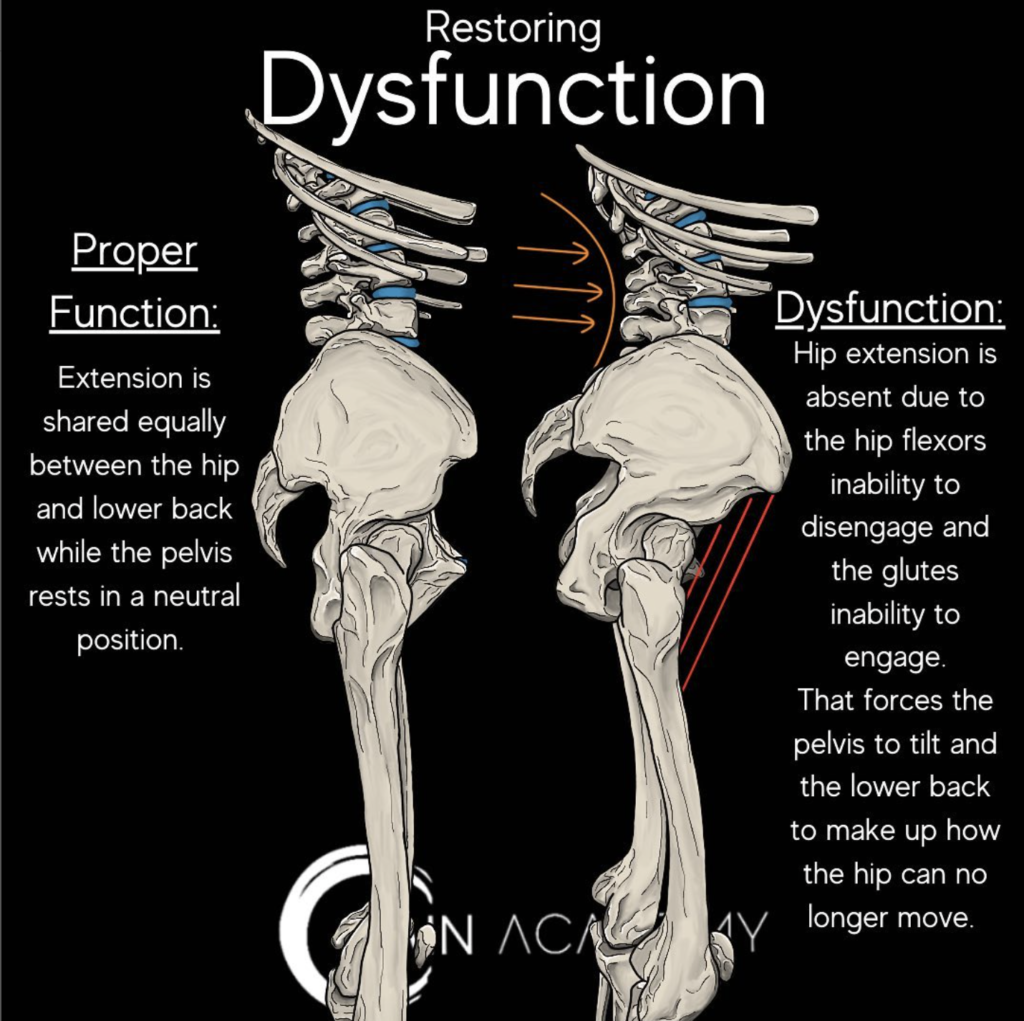
The hip joint was designed to flex, extend, internally rotate, externally rotate, move away from the center of body (abduction), and move towards the body (adduction).
A properly functioning hip can move in all these ways because the muscles on the front, back, and sides are able to engage when needed and are also able to disengage when no longer needed.
The ability for muscles to engage and disengage is what helps the hip move from a neutral starting position, then return back to a neutral position.
A dysfunctional hip can’t move well because the surrounding muscles can’t engage when they need to, or disengage when no longer needed. Usually, dysfunction is a blend of muscles that can’t work and muscles that can’t stop working.
What makes restoring function to a joint with dysfunction not so straight forward is how the entire body has helped to keep you moving for all those years despite the dysfunction.
For example, if a hip can’t move well the pelvis will tilt forwards and the lower back will arch to help ‘make up’ that missing motion no longer happening in the hip joint. In other words, the pelvis and lower back compensate by moving more because the hip can’t move.
This incredible ability to compensate and shift work around is what helps us move when we are injured; it’s an effective strategy, but a short-term strategy at best. These brilliant compensational mechanisms are designed get us out of harms way and survive; they aren’t designed to permanently take over for the long haul.
The back can only compensate for so long before back pain, disc degeneration, and nerve impingement start to show up.
If you have a joint dysfunction, the best thing you can do is work on your entire body. Yes, the muscles surrounding the dysfunctional joint need to learn how to engage and disengage again; but you also have an entire body around that dysfunction that has become highly skilled at compensation.
That dysfunction won’t fully change if how you’ve been compensating for years isn’t addressed with it; compensation and dysfunction much be approached simultaneously.
Relax the compensation while restoring function.
Restore function while relaxing the compensation.
If you are wanting to learn how to do both simulataneously, click here to get started with our online movement program!